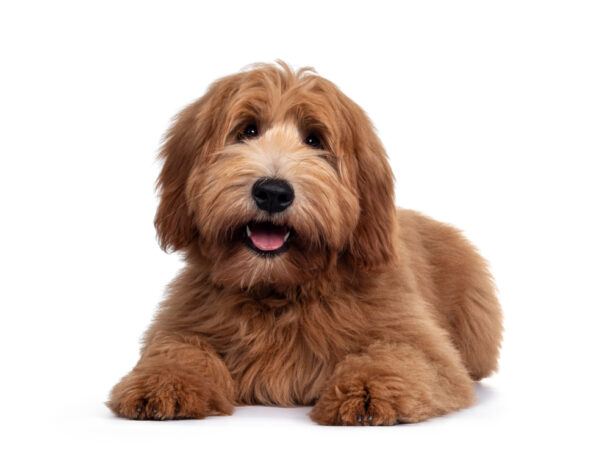LifeWithMyDogs is supported by our audience. When you purchase through one of our links, we may earn a small affiliate commission. As an Amazon Associate I earn from qualifying purchases. Your cost is not affected.
**********
Grooming tips for double-coated dogs ensure your furry friend’s coat remains healthy and radiant, providing essential care practices for optimal comfort and well-being.
As a seasoned pet owner who has had the joy of sharing my home with several double-coated dogs over the years, I’ve come to appreciate the unique grooming needs that come with these furry companions. Each of my canine friends has taught me valuable lessons about the importance of proper grooming for their comfort and well-being.
In this guide, I’ll share insights and practices gleaned from my personal experiences, as well as expert advice, to help fellow pet enthusiasts navigate the art of grooming double-coated dogs with confidence and care. Whether you’re a seasoned owner or new to the world of double-coated breeds, join me as we explore essential grooming tips and techniques to ensure your furry friend’s coat remains healthy, shiny, and oh-so-huggable.
Grooming Tips for Double-Coated Dogs: Essential Care Practices
Grooming a double-coated dog is essential for their comfort and health, ensuring the coat serves its purpose of protecting your pet from weather extremes.Unlike single-coated breeds, double-coated dogs have a dense undercoat of short hairs to keep them warm and an outer coat of longer hairs that repel water and dirt.

Wag-Worthy Points
- Regular brushing is crucial for the health of a double-coated dog’s fur.
- The right grooming equipment makes the maintenance process more effective.
- A balanced diet contributes to the condition of your pet’s coat.
Proper grooming not only helps to maintain the insulating qualities of this type of coat but also reduces shedding and prevents skin issues.Understanding the structure of your dog’s double coat is crucial before starting a grooming routine.Regular brushing is vital to remove loose fur and prevent matting, especially during seasonal shedding periods.Additionally, the right grooming tools can make the process more efficient and enjoyable for both you and your pet.
A balanced diet and staying informed on grooming hygiene standards can also significantly impact the health and appearance of your dog’s coat.
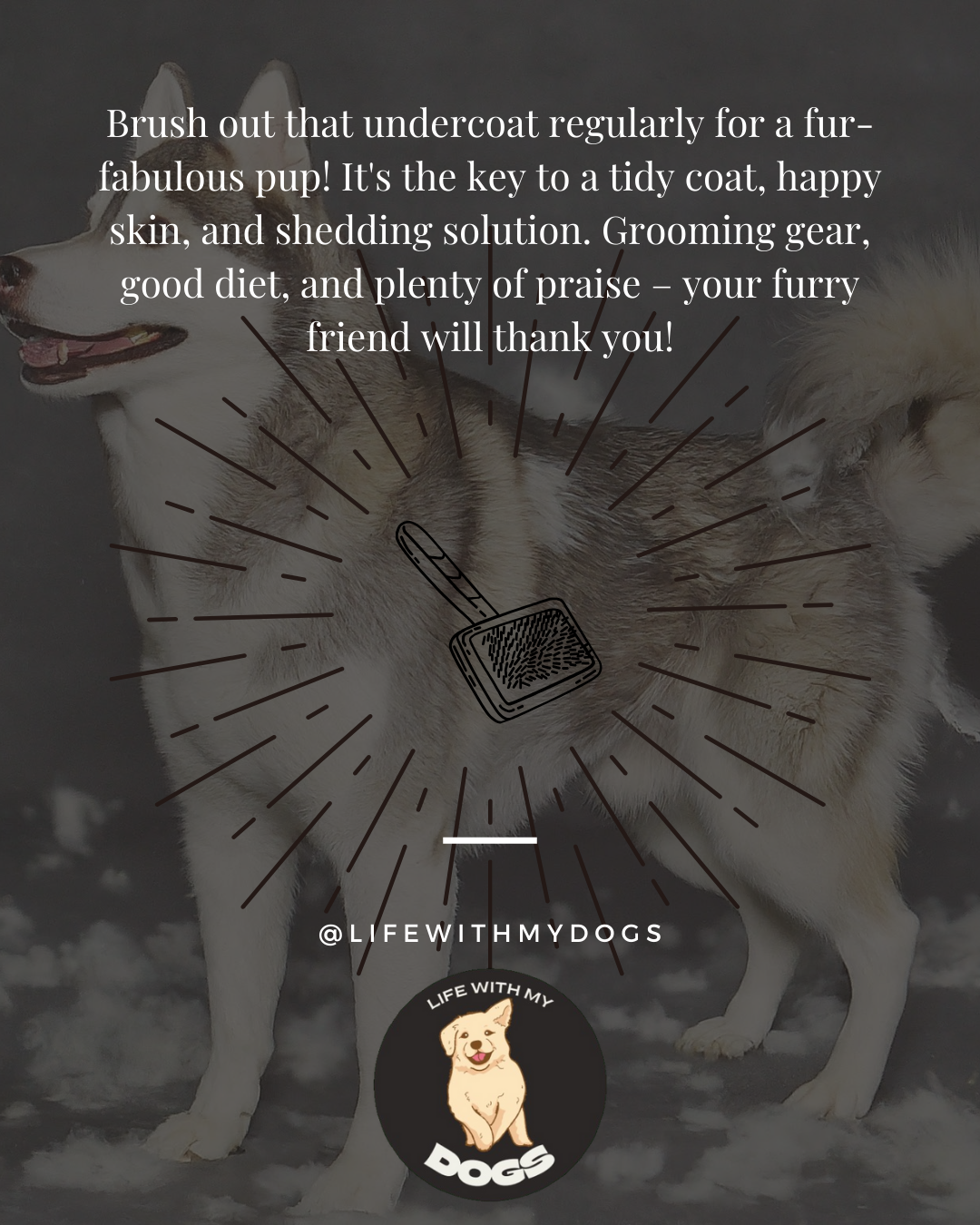
What Is a Double Coat?

When grooming your dog, recognizing if they have a double coat is crucial as it influences the care they require.
Characteristics of Double-Coated Breeds
Double-coated breeds possess two layers of fur: a soft, dense undercoat that provides insulation and a longer, coarser topcoat that helps repel water and shield from dirt.
This two-layer system is common in breeds like Siberian Huskies, German Shepherds, and Golden Retrievers.
Their coat is designed to endure various weather conditions, making it vital to groom them properly to maintain their coat’s integrity.
- Undercoat: Soft and fine, acting as insulation.
- Topcoat: Longer and wiry, protecting against external elements.
Benefits of Double Coating
The double coat offers a range of benefits for your dog:
- Temperature Regulation: In the winter, the undercoat provides warmth, while in the summer, it helps keep your dog cool.
- Protection: The topcoat guards against UV rays, moisture, and outdoor debris.
- Skin Health: Proper maintenance ensures skin health by reducing the risk of mats and allowing the skin to breathe.
Respecting the natural structure of your dog’s double coat through regular grooming maintains these benefits.
Basic Grooming Equipment
The proper grooming of a double-coated dog hinges on using the right equipment. Each tool is designed for specific tasks that help maintain the coat’s health and appearance.

Brush Types
- Slicker Brushes: Ideal for detangling and removing loose fur from your dog’s coat. For effective undercoat grooming, a slicker brush is a quintessential tool.
- Pin Brushes: These are gentler than slicker brushes and work well for dogs with longer hair.
- Bristle Brushes: Use these for finishing touches, as they help distribute natural oils and create a shiny coat.
Combs and Rakes
- Undercoat Rakes: Designed to penetrate thick fur and remove tangles and loose undercoat without damaging the topcoat.
- Dematting Combs: Cut through mats and tangles, which are common in double-coated breeds.
Grooming Clippers
- High-Quality Clippers: Necessary for trimming hair around paws and other sensitive areas.
Always choose clippers specifically meant for dogs, as they have the right blade speed and guard options to be safe for your double-coated friend.
Regular Grooming Routine
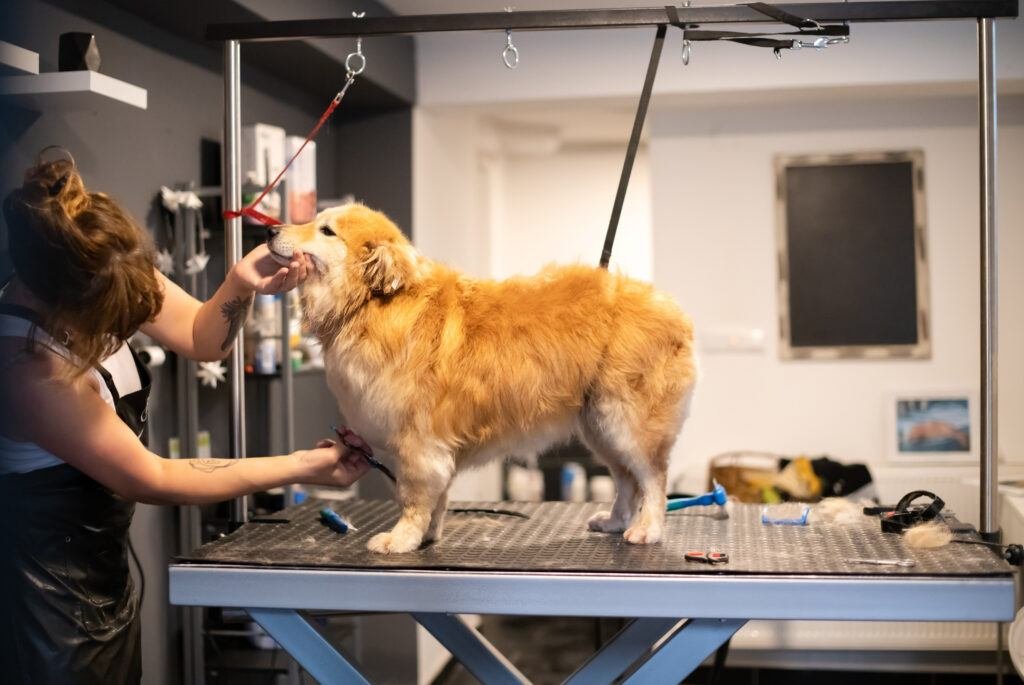
Caring for your double-coated dog involves a consistent grooming routine to maintain their coat’s health and manage shedding.
Focus on targeted brushing techniques, establish regular bathing practices, and don’t overlook the importance of ear and paw care.
Brushing Techniques
Brushing your double-coated dog should happen several times a week using the right tools to reach both the topcoat and undercoat.
Start with a slicker brush to remove tangles and then a deshedding tool to thin out the dense undercoat, reducing shedding and matting.
- Topcoat: Use longer, gentle strokes
- Undercoat: Short, more frequent strokes
Bathing Practices
When bathing your dog, choose a shampoo formulated for double-coated breeds to help maintain the natural oils in their fur.
In the grooming process, a bath should come after thorough brushing to ensure the water and shampoo penetrate the thick coat efficiently.
Limit baths to once every couple of months or when your dog is visibly dirty to prevent drying out their skin.
- Pre-bath: Complete brush out
- Post-bath: Thorough rinse and dry
Ear and Paw Care
Ear and paw maintenance is critical for avoiding infections and ensuring comfort.
Check your dog’s ears weekly for debris and clean them using a vet-recommended solution.
Keep the fur between their paw pads trimmed to prevent matting and accumulation of dirt. Use expert tips and techniques for safe trimming and cleaning practices.
- Ears: Gentle wipes and checks
- Paws: Regular trims and inspections
Seasonal Grooming
Seasonal grooming is essential for maintaining the health and comfort of double-coated dogs. Proper techniques and timing can significantly reduce shedding and protect your dog from temperature extremes.
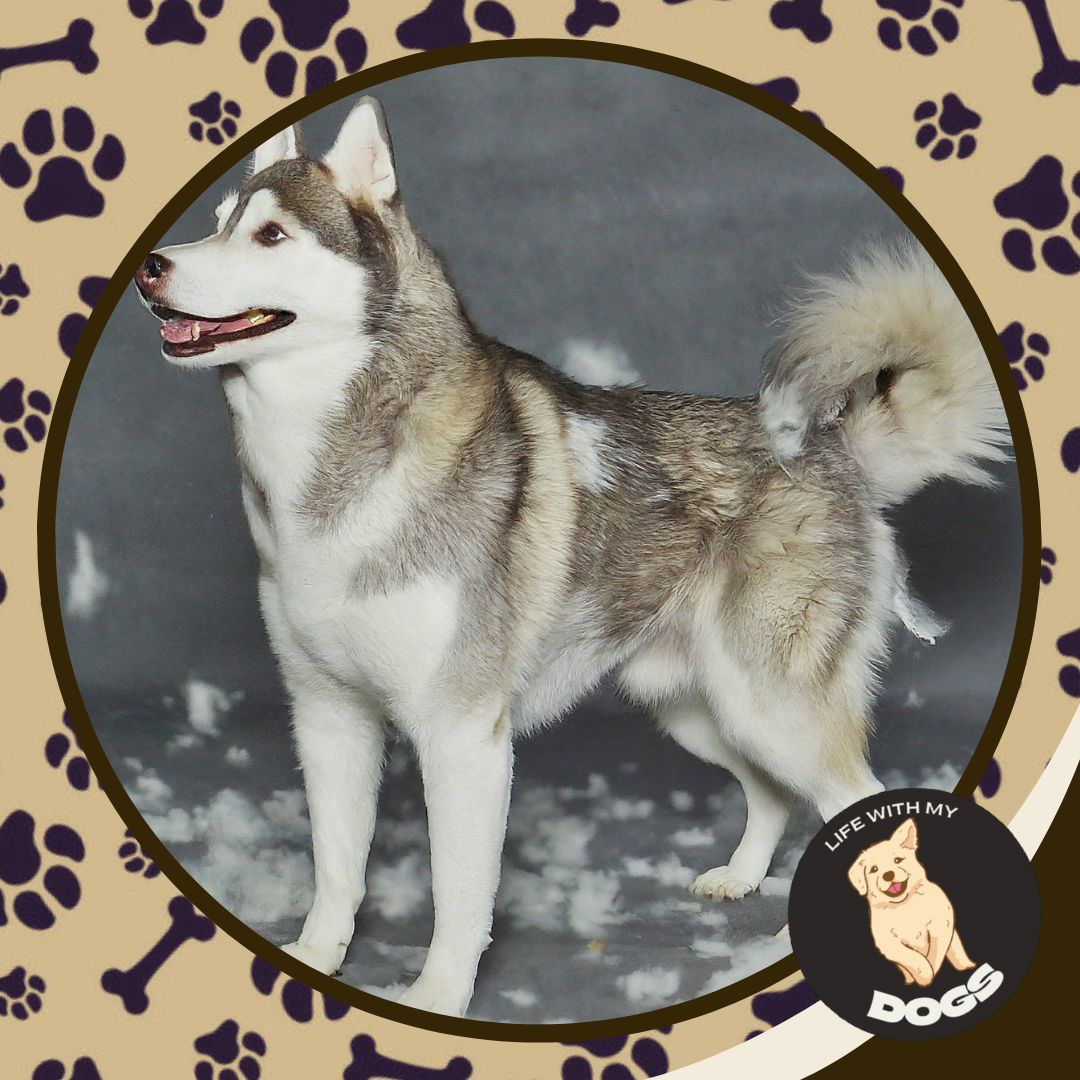
Dealing with Shedding
Your dog’s undercoat will shed more intensely during the spring and fall as they prepare for the changing seasons.
During these times, increase the frequency of your grooming routine to manage the loose fur.
Using an undercoat rake can effectively thin out the dead hair and prevent matting.
Regular brushing with a slicker brush can also help remove the loose undercoat and distribute natural oils throughout the coat.
Winter Grooming Tips
In winter, your dog relies on their coat for insulation. Keep the coat clean and dry to retain its insulating properties.
Trim the hair between the pads of their feet to prevent ice buildup. Avoid cutting the coat, as this can reduce protection against the cold weather.
Opt for a good bathing routine but ensure that the coat is completely dry to avoid any chill.
Summer Grooming Considerations
During summer, avoid the urge to shave your double-coated dog as their coat provides necessary protection from sunburn and overheating.
Ensure their coat is free of mats which can trap heat. A well-groomed coat allows for proper air circulation.
For dogs that spend a lot of time outdoors, consider using a de-shedding tool to help keep them cool.
Always provide plenty of water and shade to prevent heatstroke.
Professional Grooming vs. Home Care
Deciding between professional grooming and home care for your double-coated dog involves understanding the intricacies of each option for optimal coat health.

When to Seek Professional Help
Professional grooming should be considered when your dog’s coat needs intensive care, beyond routine brushing and bathing.
Indicators include excessive matting, the need for thorough deshedding, or skin issues that require specialized attention.
Professional groomers possess the tools and expertise to handle these situations with care, reducing the risk of injury to your dog.
For intricate needs, such as preparing for dog shows, or when dealing with particularly challenging coat conditions, seeking professional grooming services is advisable.
Maintaining Grooming at Home
Maintaining your dog’s coat at home is crucial for their day-to-day comfort and health.
This includes regular brushing to prevent matting, and bathing with the appropriate shampoo to keep their coat clean without stripping natural oils.
Equip yourself with the right tools—a slicker brush, an undercoat rake, and a de-shedding tool.
Brushing several times a week and more frequently during shedding season helps manage loose fur and undercoat.
For detailed routines, refer to guidelines on how to groom a double-coated dog.
Health Considerations
Proper grooming goes beyond aesthetics, as it is vital to maintaining your double-coated dog’s overall health.

Skin Problems
Your grooming routine greatly influences your dog’s skin health.
Regular brushing is essential to not only keep their coat tangle-free but also to distribute natural oils, which protect against skin infections.
Discover the intricacies of double-coated dog grooming to understand the best practices.
Pay attention to signs of irritation or allergy such as redness, bald patches, or excessive scratching, which may indicate a need for a veterinarian visit.
- Signs to watch for include:
- Redness or inflammation
- Bald spots or patchy fur
- Constant scratching or licking a particular area
Parasite Prevention
Parasites like fleas and ticks can be more than just a nuisance; they may carry diseases harmful to your dog’s health.
It’s important to employ effective parasite prevention methods, especially in a double-coated breed where pests can hide deep in the fur.
Using flea combs during grooming sessions can help you spot these critters early.
Consult your vet about appropriate flea and tick preventatives tailored to your dog’s needs.
- Preventative measures include:
- Regular use of vet-recommended flea and tick medication
- Inspecting your dog’s coat for parasites after walks in the bush or park
- Incorporating flea combs in your grooming toolkit
Diet and Grooming
Proper nutrition is essential for maintaining your double-coated dog’s healthy skin and fur.
Nutrition for Healthy Coats
Your dog’s diet should be rich in proteins and fats, which are the building blocks for a healthy coat.
Specifically, proteins support hair growth, while omega-3 and omega-6 fatty acids help to keep the skin healthy and the coat shiny.
Foods like fish, especially salmon, can be particularly beneficial.
Ensure that your dog’s diet is also balanced with the right amount of vitamins and minerals, such as vitamin E, zinc, and biotin, to promote follicle strength.
Supplements for Coat Maintenance
In addition to a balanced diet, you might consider supplements specifically designed for skin and coat health.
Fish oil supplements are well-regarded for improving coat texture and shine due to their high omega-3 content.
Another option is flaxseed oil, which is a plant-based omega-3 alternative for dogs that may not like fishy flavors.
It’s important to introduce supplements gradually and consult with your veterinarian to ensure they’re necessary and appropriate for your specific dog.
Advanced Grooming Techniques
When grooming your double-coated dog, it’s essential to go beyond the basics.
Harness the power of undercoat rakes and de-shedding tools to effectively manage your dog’s thick undercoat. Here’s how to use them:
- Undercoat Rakes: Designed to reach deep into the double coat without harming the topcoat, undercoat rakes gently remove loose underhair.
- Start by thoroughly brushing the topcoat using a slicker brush to detangle.
- Gently glide the rake through the undercoat in the direction of hair growth.
- Focus on one section at a time, ensuring you’re not applying too much pressure.
- De-shedding Tools: Such tools are tailored to remove dead hairs before they shed.
- Before using a de-shedding tool, make sure your dog’s coat is free of mats and tangles.
- Use short, gentle strokes, working in the direction of fur growth.
- Regular use will minimize shedding and help distribute natural skin oils.
For dense fur regions, combine the use of these tools with the line brushing technique:
- Part the hair in small sections (‘lines’) and brush each layer separately.
- Start from the bottom layer and work your way up to ensure no spots are missed.
Grooming Challenges
Grooming a double-coated dog presents specific challenges that require careful attention and technique. Understanding these challenges will help you maintain your dog’s coat health and appearance.

Matting and Tangles
Matting occurs when loose and dead hair becomes tangled with live hair, which can lead to skin irritation and discomfort for your dog.
Regular brushing the undercoat helps prevent matting, but be sure to do so gently to avoid hurting your dog.
Use a technique of brushing from the neck to the tail, unraveling tangles as you encounter them with a proper dog comb or slicker brush.
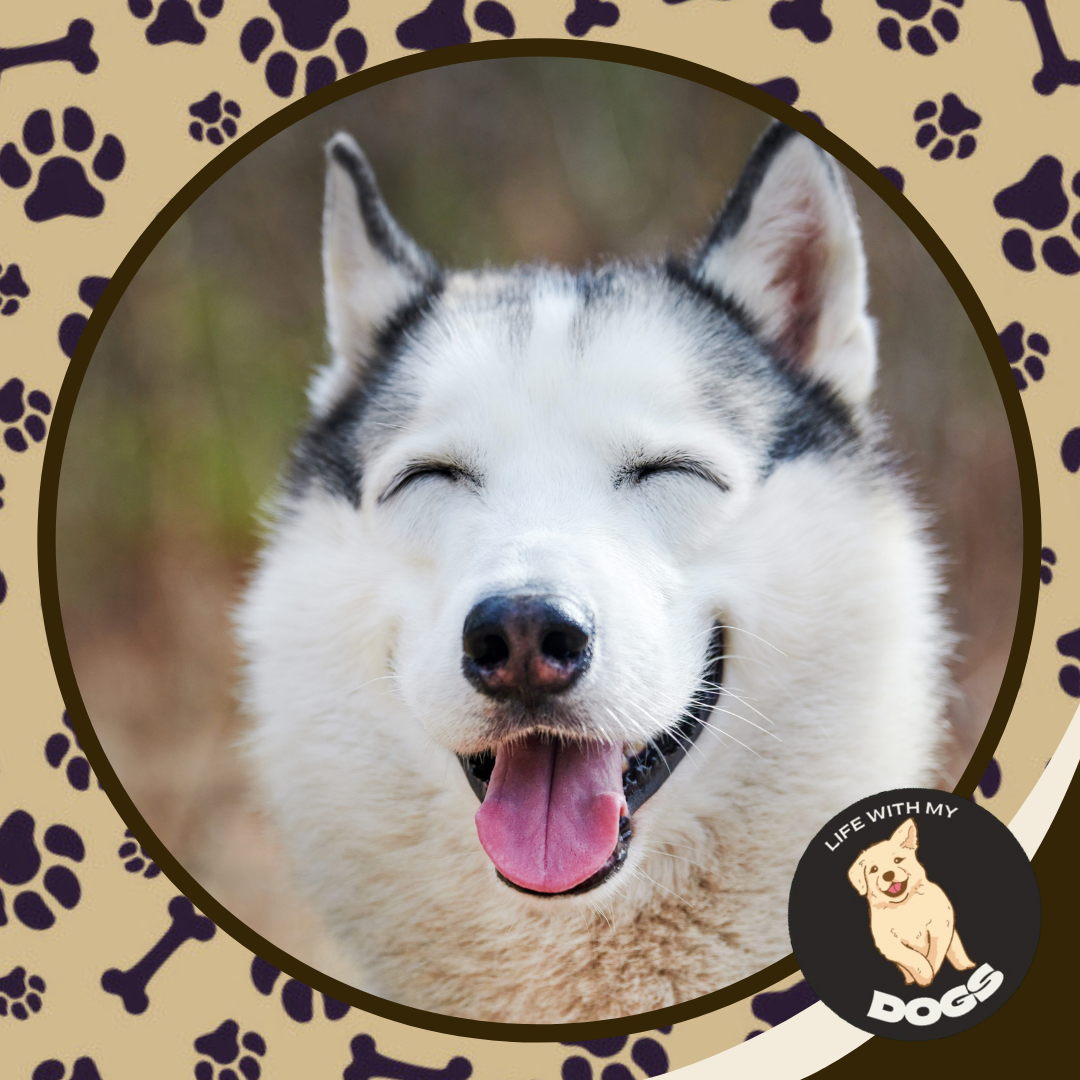
Sensitive Areas Care
The areas behind the ears, under the legs, and around the tail are particularly prone to matting and therefore require special care.
These sensitive areas should be handled gently; use a deshedding tool to meticulously work through tangles and remove loose fur without causing any discomfort.
Breed-Specific Grooming

When grooming your double-coated dog, it’s crucial to understand that each breed may require different grooming techniques.
For instance, a Husky’s thick fur calls for particular tools and methods different than those used for a Golden Retriever.
Huskies and Malamutes:
- Brushing: At least once a week with a slicker brush and undercoat rake.
- Bathing: Only when necessary to avoid stripping natural oils.
Golden Retrievers and Labradors:
- Brushing: Frequent brushing several times a week.
- Bathing: Once every 1-2 months, using a mild dog shampoo.
German Shepherds:
- Brushing: At least 3-4 times a week with a deshedding tool.
- Bathing: Sporadic, to maintain skin health.
Collies and Shelties:
- Brushing: Daily brushing during shedding season.
- Bathing: Limited to occasional baths with gentle shampoo.
Remember to regularly check your dog for mats, particularly in areas like behind the ears and under the legs.
For breeds like Samoyeds or Chow Chows, attention to these areas is essential to prevent uncomfortable tangles and potential skin issues.
Tools You Might Need:
- Slicker brush
- Undercoat rake
- Deshedding tool
- Metal comb
- Scissors (for trimming when necessary)
Grooming Hygiene Standards
When grooming your double-coated dog, maintaining high hygiene standards is crucial. Here’s a breakdown of the key components:
Brushing: Regularly brush your dog’s coat to remove dirt and loose fur.
Aim for a few times a week, escalating to daily during shedding seasons.
Use brushes that are specifically designed for double-coated dogs to ensure you’re getting both layers of the coat.
Bathing: Less frequent baths are necessary due to the natural oil in their coat which offers protection and waterproofing.
When you do bathe your dog, ensure you use a quality shampoo made for dogs, and avoid over-bathing as this can strip the oils and dry out their skin.
Ear Care: Check and clean your dog’s ears regularly to prevent infections. A gentle wipe with a vet-approved cleanser can do the trick.
Nail Trimming: Keep your dog’s nails trimmed to prevent discomfort while walking and reduce the risk of infection.
| Activity | Frequency | Tips |
|---|---|---|
| Brushing | Weekly (daily during shedding season) | Use the right brush; gently work tangles |
| Bathing | Every few months | Use dog-specific shampoo; rinse thoroughly |
| Ear Cleaning | Weekly | Use vet-recommended ear cleanser |
| Nail Trimming | Monthly | Use proper nail clippers; avoid the quick |
Remember, never shave your double-coated dog unless medically necessary, as this can damage their coat and impact insulation. Instead, focus on regular grooming to keep their coat in prime condition.
Grooming Tips for Double-Coated Dogs: Final Thoughts
Throughout this grooming journey, we’ve delved into the intricacies of caring for double-coated dogs, drawing from personal experiences and expert advice alike.

From understanding the structure of their coat to mastering the art of brushing techniques and seasonal grooming considerations, we’ve covered it all.
Remember the importance of regular grooming routines, appropriate tools, and breed-specific needs to keep your furry friend’s coat healthy and radiant.
I sincerely thank you for joining me on this journey. May your grooming sessions be filled with joy, bonding, and endless tail wags.
Now, it’s time to put these insights into action and pamper your beloved double-coated companion. Happy grooming!
Frequently Asked Questions
These FAQs provide targeted advice to help you care for your double-coated dog’s unique grooming needs.
What type of brush is best for grooming a double-coated dog?
For double-coated breeds, using a wire brush or a pin brush can effectively remove loose hairs and prevent matting.
It’s also beneficial to use undercoat rakes for thorough grooming.
How frequently should a double-coated dog be bathed?
Your double-coated dog should receive a bath roughly every three months, as excessive bathing can strip natural oils from their coat. However, if your dog gets dirty often, you might need to adjust this frequency.
Is it beneficial or harmful to shave a double-coated dog?
Shaving can damage a double-coated dog’s fur and even hinder its natural ability to regulate temperature.
Deciding to shave should be done with caution and typically avoided.
What are effective home grooming strategies for double-coated dogs?
Consistent brushing, particularly during shedding season, is key.
Incorporate daily brushing and monthly baths into your routine, using suitable dog shampoos and undercoat rakes to manage their coat.
What techniques should be used to dry a double-coated dog after bathing?
After thorough rinsing, absorb as much water as possible with towels.
Then, use a blow dryer on a cool or low setting to dry the coat completely, especially the dense undercoat.
How can you identify if a dog has a double coat?
A double-coated dog has a softer and denser undercoat beneath a harsher, longer outer coat.
Double coats are common in breeds designed for cold climates, such as huskies and retrievers.
Paws for More Info


